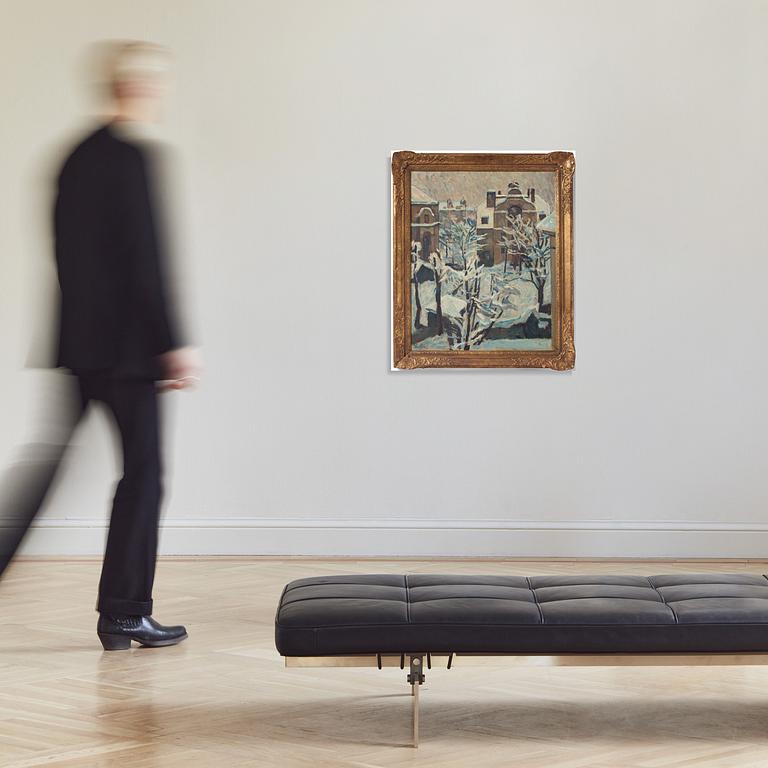Leo Putz
"Stadtgarten im Schnee"
Signed Leo Putz. Canvas 77 x 62 cm. We thank Mr Christian Putz for confirming this work.
Provenance
Managing Director Torsten Hérnod (1885-1957), Djursholm, Sweden;
His son Lennart Hèrnod (1918-1986), board member of the Swedish Club (Cercle Suédois), Paris;
thence inherited within the family.
More information
Leo Putz was one of the main characters of the artist group 'Die Scholle', which operated in Munich from around 1899 to 1911. At the time, its members were considered some of the most radical artists on the city's art scene. At the beginning of his career, Putz worked in a symbolist spirit and created several monumental paintings. After a while, however, he abandoned symbolism and began painting more erotic and humorous motifs based on well-known mythological themes. He was often deliberately provocative, as a way of promoting his person and his art. An example of this is Putz's painting entitled 'Bacchanale', which was removed from the exhibition at the Glaspalast in 1905 because of its indecent subject matter. The attention paid off and the following year his career really took off when the well-known gallerist Franz Josef Brakl took him on. Already in 1908 the first monograph on Putz's work was published and in 1909 he was appointed professor. At this time, his erotic motifs became less prominent and he turned to painting portraits and nudes of young women in an impressionistic style. He liked to place his models outdoors, in forests and waterfronts. Several of his paintings with motifs of young models bathing or washing themselves are reminiscent, to a Swedish eye, of Anders Zorn's paintings of dalecarlian women.
For a few years around 1930, Putz lived in Brazil and Argentina. There he found new inspiration, his paintings became brighter and more colorful. Here he produced several works with motifs from the rainforest, the beaches and the colorful local population. Due to health problems Putz had to return to Germany in 1933. There he had time to exhibit his new paintings at the Kunstverein in Munich before his art was labeled Entartete Kunst because he publicly questioned the rules of the Nazi regime. No longer allowed to work in Germany, he left for Italy where he died in Merano in 1940.
The current painting 'Stadtgarten im Schnee' by Leo Putz was acquired by Torsten Hèrnod in Munich during one of his trips and was incorporated into his art collection at his villa in Djursholm. The painting has remained in the same family until today.
Director Torsten Hèrnod (1885-1957) was a Swedish industrialist and a leading figure in the Swedish forestry industry in the early 20th century. He led and developed Svenska Cellulosa AB until 1947 and was appointed Chairman of the Board of the Swedish General Export Association. Torsten Hèrnod made a significant contribution to Swedish industry's fundraising for Finland in 1940 and contributed greatly to Finland's war effort against the Soviet Union. He was therefore awarded the Grand Cross of the Order of the White Rose of Finland.
















































